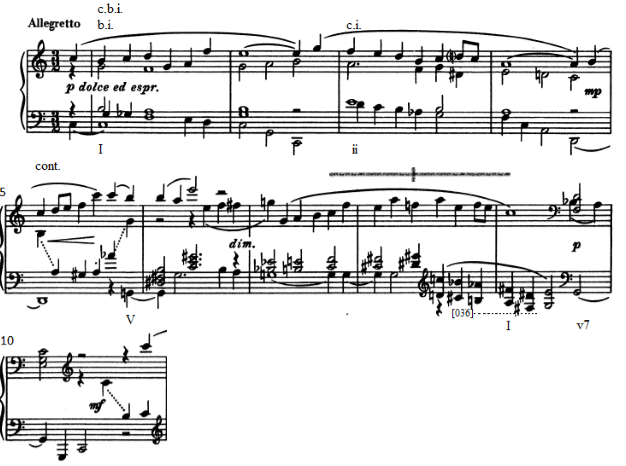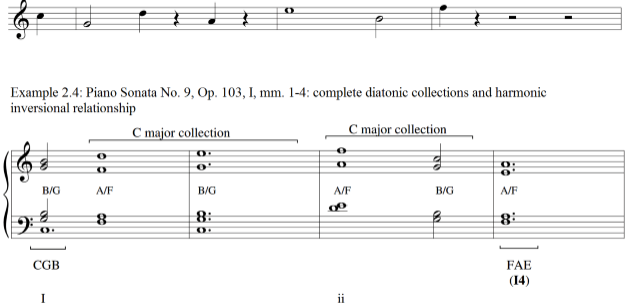Introduction
Sergei Prokofiev’s last work in violin was composed in 1947; it was known as Santana for Solo or Unison Violins, Op.115. As compared to Giovanni Battista Viotti’s forms of music, Prokofiev’s music has appealed to a few music theorists’ attention. Over the years, analysts of Prokofiev and Giovanni have continued to emerge in isolation. They have portrayed a range of studies that include phrase structure and music narrative explorations. Moreover, motive and harmony have been approached in vantage points of Neotonal and Schenkerian theories (Bazayev, 2018). Several scholars have recognized that its electric and multifaceted nature characterizes Prokofiev’s richness as music.
Theme Outline
Regarding the classic line, both composers assume the neo-classic form consisting of sonatas and concertos, which imitates the gavottes, sinfonietta, and classical symphony. The music genres are mostly recognized for their strict devotion to sonata form and regular hypermeter. These are a combination of features that reflect on the classical line characterized by balancing authentic functions at both the individual advancement and large-scale choral relationships (Bazayev, 2018). Both music composers heavily focus on the concept of tonal and harmonic balances, which develops its unique form depicting the multifaceted theme. However, the specific article in both is signified by elegant and straightforward harmonic-functional equilibrium over its applications.
Compositions


Both compositions underscore the motions paired with strong-beat resonances that add to a complete collection of the C-major. They have bass tones for both the contrasting and fundamental ideas that support the I-ii progression in a sequential repetition. The compositions also indicate the inverse relationship between verticality upon mm. 1 and 4 (Bazayev, 2018). The significance of the relationship is obtained when comparisons of melodic lines are put into considerations.
Composers
Sergei Prokofiev is a Russian writer who became of the greatest 20th –century music legends. As a composer, he worked on a wide range of artistic forms from ballets, Cinderella, and Romeo and Juliet (Bazayev, 2018). After establishing a prominent name abroad and becoming a great curator, Sergei Prokofiev shocked the music world when he decided to move to Russia in 1935. Scholars believe that the demand made such a decision of the Soviet Union leader’s interests in art. While in the Soviet Union under Stalin’s influence, Prokofiev composed Sonata for Solo that became one of the few music styles that existed in the Soviet Union. It became the only sonata that served a dual function of solo and unison. After the composition, no other work was produced that involved the performance by unison violins. On the other hand, Giovanni Battista Viotti was an Italian composer and violinist known as the principal founder of violin playing school in the 19th century (Bazayev, 2018). He was born in 1755, and his work featured prominent violin and appealing lyrical and worked in the Italian and French opera companies.
Background
Sonata for Solo violin refers to a three-movement exertion in an unaccompanied violin commissioned by the Soviet Union’s Committee of Arts Affairs. It was considered as a pedagogical work used for violin students. It was considered a non-virtuosic piece initially designed to be performed by multiple players in harmony. Giovanni Battista Viotti, born in 1755, had teachings through playing and compositions have been arguably one of the most influential in violin history. Unlike Prokofiev, Battista’s work comprised of various music combinations (Yim, 2017). It involved violin concertos, sonatas and keyboard, duets, quartets, and trios. However, Prokofiev work’s significant difference is that for Viotti, his work could be performed by anyone, while for Prokofiev, it was mainly played by young people.
Process and Ensemble
Prokofiev and Viotti’s music’s mathematical arrangement is considerably similar when observed from composition and orchestration styles. Both of the music styles entailed a group of performers who work together in harmony. Their scales, sound waves, chords, intervals, and rhythm are scientifically arranged to bring out the best performance that thrills the audience (Yim, 2017). Both of these composers participated in promoting violin involvement in orchestras, making it a popular genre for both adults and children.
Arrangements
In arrangements, Viotti emphasized the different keys that enabled him to exploit vocal possibilities in Italian jazz. Among his many instruments, the significant and most important were the violin and cello. The combination sometimes involved the use of a guitar, which was a rare instrument in Prokofiev. However, in both scenarios, the piano was a main instrument besides the violin. Similarly, the Prokofiev style of music depicted more of classical elegance and incorporated many modern elements of music (Yim, 2017). He also composed music with a broad audience, including children, such as Peter and the Wolf, which has eventually been incorporated into the classical canon. However, he is mostly known for his work of Romeo and Juliet and Cinderella, which have attracted a wider audience provoking wild and romantic imagination among the audience.
References
Bazayev, I. (2018). An Octatonic History of Prokofiev’s Compositional Oeuvre. Music Theory Online, 24(2). Web.
Yim, D. (2017). Viotti and the Chinnerys: a relationship charted through letters. Routledge. Web.